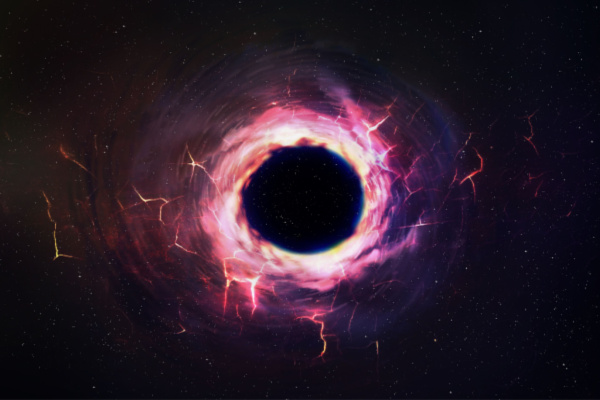NASA has released a haunting audio clip of sound waves rippling out of a supermassive black hole, located 250 million light-years away.
As Science Alert reports, the black hole is at the center of the Perseus cluster of galaxies, and the acoustic waves coming from it have been transposed up 57 and 58 octaves so they’re audible to human hearing.
The result, released by NASA in May, is a sort of unearthly (obviously) howling that, to be honest, sounds not only spooky, but a little bit angry. It’s the first time these sound waves have been extracted and made audible. So what’s going on here? We might not be able to hear sound in space, but that doesn’t mean there isn’t any.
In 2003, astronomers detected something truly astonishing: acoustic waves propagating through the copious amounts of gas surrounding the supermassive black hole at the centre of the Perseus galaxy cluster, which is now renowned for its eerie wails. We wouldn’t be able to hear them at their current pitch. The waves include the lowest note in the Universe ever detected by humans – well below the limits of human hearing.
But this recent sonification has not only brought the recording up a whole lot of octaves, they’ve also added to the notes detected from the black hole, so we can get a sense of what they would sound like, ringing through intergalactic space.
The lowest note, the one identified back in 2003, is a B-flat, just over 57 octaves below middle C; at that pitch, its frequency is 10 million years. The lowest note detectable by humans has a frequency of one-twentieth of a second.
The sound waves were extracted radially, or outwards from the supermassive black hole at the center of the Perseus cluster, and played in an anti-clockwise direction from the center, so that we can hear the sounds in all directions from the supermassive black hole at pitches 144 quadrillion and 288 quadrillion times higher than their original frequency.
The result is an eerie one, like many of the waves recorded from space and transposed into audio frequencies. The sounds aren’t just a scientific curiosity, though. The tenuous gas and plasma that drifts between the galaxies in galaxy clusters – known as the intracluster medium – is denser and much, much hotter than the intergalactic medium outside galaxy clusters.
According to Science Alert, sound waves propagating through the intracluster medium is one mechanism whereby the intracluster medium can be heated, as they transport energy through the plasma. Because temperatures help regulate star formation, sound waves might therefore play a vital role in the evolution of galaxy clusters over long periods of time.
That heat is what allows us to detect the sound waves, too. Because the intracluster medium is so hot, it glows brightly in X-rays. The Chandra X-ray Observatory allowed not only for the detection of the sound waves initially, but for the sonification project.
Turning visual data like these into sound can be a cool new way to experience cosmic phenomena, and the method has scientific value, too. Sometimes, transforming a dataset can reveal hidden details, allowing for more detailed discoveries about the mysterious and vast Universe around us.
—
Photo Credit: Vadim Sadovski / Shutterstock.com
